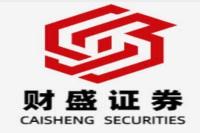Patience Capital: The Engine of China's Technological Leap Forward
Meta Description: Discover how China is fostering innovation through the cultivation of patient capital, focusing on the expanding role of AICs (Asset Investment Companies) in funding early-stage, high-tech ventures. Explore expert insights, policy changes, and the future of technological investment in China. #PatienceCapital #AIC #TechInnovation #China #VentureCapital #FinancialInnovation
Wow, China's tech scene is exploding! And at the heart of this incredible growth? It's not just about quick wins and flashy startups. It's about something deeper, something more sustainable: patience capital. Forget the get-rich-quick schemes; this is about long-term vision, nurturing groundbreaking technologies from seedling to towering oak. This isn't just another article about investment; it's a deep dive into the strategic thinking driving China's ambitious technological leap forward, a journey that's shaping the global landscape. We'll unravel the complexities of patient capital, its role in fostering innovation, and the crucial part played by Asset Investment Companies (AICs). We’ll dissect the policies driving this transformation, hear from key players in the industry, and gaze into the crystal ball to predict the future of technological investment in China. Get ready to be amazed by the innovative strategies and the far-reaching implications for businesses and investors alike! This isn't just financial analysis; it's a story of visionary leadership, calculated risk-taking, and the unwavering pursuit of technological advancement. Prepare to be captivated by the intricate workings of China's tech engine and the profound impact of patient capital on its future. Buckle up, folks, it's going to be a wild ride!
Patience Capital: The Cornerstone of Technological Advancement
The 2024 AIC (Asset Investment Companies) Equity Investment Symposium highlighted a crucial element in China’s push for technological dominance: patience capital. This isn’t just about long-term investment horizons; it’s a philosophical shift, a commitment to nurturing innovation from its nascent stages. It's about betting on the long shot, the revolutionary idea that might take years, even decades, to fully blossom. This is fundamentally different from the short-term, high-return investment strategies often favored by Western investors.
Unlike venture capitalists who may prioritize quick exits and high returns within a few years, patient capital takes a longer view. It understands that groundbreaking technologies often require significant upfront investment and extended periods of research and development before generating substantial returns. This approach is critical for supporting high-risk, high-reward ventures in fields like artificial intelligence, biotechnology, and advanced materials – quintessential examples of "hard tech".
The Expanding Role of Asset Investment Companies (AICs)
The recent expansion of the AIC equity investment pilot program to 18 major cities underscores the government's commitment to fostering patient capital. AICs, essentially state-backed investment vehicles, are uniquely positioned to provide the long-term funding that many high-tech startups desperately need. This isn't just about throwing money at a problem; it's a strategic move to cultivate a robust ecosystem of innovation.
Think of AICs as the unsung heroes of China's tech revolution. They're not just providing funding; they’re providing crucial support, guidance, and access to resources, acting as mentors and partners, not just investors. This holistic approach is what sets them apart.
AIC Strategies for Success
Many AICs are adopting innovative strategies to maximize their impact. For example, ICBC's (Industrial and Commercial Bank of China) approach emphasizes a "six-specialized" system:
- Specialized Service Teams: Dedicated teams focused on specific sectors.
- Specialized Work Mechanisms: Streamlined processes for efficient operations.
- Specialized Approval Processes: Faster decision-making for timely funding.
- Specialized Risk Management: Sophisticated risk assessment and mitigation.
- Specialized Funding Guarantees: Reliable financial backing for long-term projects.
- Specialized Performance Evaluation: Metrics tailored to long-term investment goals.
This multi-pronged approach showcases a deep understanding of the complexities involved in nurturing high-tech innovation. It's a far cry from the more transactional approach often seen in traditional venture capital.
Government Support and Policy Initiatives
The Chinese government is actively promoting the development of patient capital through various policy initiatives. The 16 measures aimed at improving capital market services for technological innovation, for instance, have created a more conducive environment for tech companies to access funding. These measures include streamlining the listing process for tech leaders, facilitating mergers and acquisitions, and creating dedicated channels for bond issuance.
The impact is evident: a remarkable 70% of newly listed companies are in the technology sector. This signifies a monumental shift in the investment landscape, reflecting the government’s strategic focus on nurturing innovation.
Challenges and Opportunities
Despite the significant progress, challenges remain. Building a truly robust ecosystem of patient capital requires a delicate balance. One key challenge is developing a suitable risk assessment framework for long-term investments in high-risk ventures. Overly cautious approaches could stifle innovation, while overly aggressive approaches might lead to significant losses. Finding the right balance is crucial.
Another challenge is fostering a culture of long-term thinking among investors. The pressure to deliver quick returns can sometimes overshadow the importance of long-term growth. Addressing this issue requires a concerted effort to educate investors about the unique characteristics and benefits of patient capital.
However, the opportunities are equally significant. The growing pool of patient capital is poised to fuel a new wave of technological breakthroughs in China. This translates into not only economic growth but also enhanced global competitiveness and leadership in key technological domains.
The Future of Patient Capital in China
The future looks bright for patient capital in China. As AICs continue to expand their reach and refine their strategies, they will play an increasingly pivotal role in driving technological innovation. The government's unwavering commitment to this approach signals a long-term vision for economic growth and technological dominance.
Frequently Asked Questions (FAQs)
Q1: What is patient capital?
A1: Patient capital refers to long-term investments that prioritize the growth and development of innovative companies over short-term returns. It often involves higher risk but potentially greater rewards over a longer time horizon.
Q2: How do AICs differ from traditional venture capitalists?
A2: AICs typically have a longer-term investment horizon and a stronger focus on supporting the long-term growth of companies. They often provide more than just financial support; they also offer mentorship, guidance, and access to networks. Traditional VCs often prioritize shorter-term returns and quicker exits.
Q3: What are the key policy initiatives supporting patient capital in China?
A3: The 16 measures to improve capital market services for technological innovation are a key example. These measures streamline processes for tech companies to secure funding through various channels.
Q4: What are the main challenges in developing patient capital?
A4: Balancing risk tolerance, fostering a long-term investment culture, and developing robust risk assessment frameworks for long-term, high-risk ventures.
Q5: What are the potential benefits of increased patient capital?
A5: Fueled innovation, economic growth, enhanced global competitiveness and leadership in key technological fields.
Q6: How can investors participate in patient capital initiatives?
A6: Investing in funds that specialize in patient capital or directly investing in AICs (if opportunities arise) are potential avenues. However, individual investors should carefully assess their risk tolerance and investment horizon before committing.
Conclusion
The cultivation of patient capital is not just a financial strategy; it’s a national imperative for China’s technological ambitions. The expanding role of AICs, coupled with supportive government policies, is creating a powerful engine for innovation. While challenges remain, the potential rewards – both economic and strategic – are immense. The coming years will be crucial in shaping the future of technological innovation in China, and the story of patient capital will be central to that narrative. The implications extend far beyond China's borders, influencing the global technological landscape for years to come. This is a story worth watching closely.



